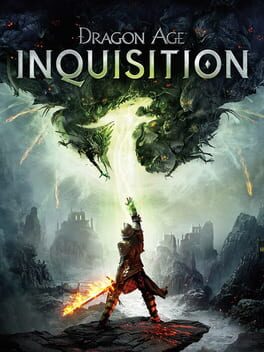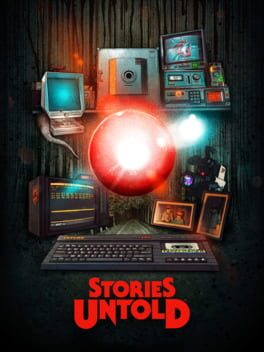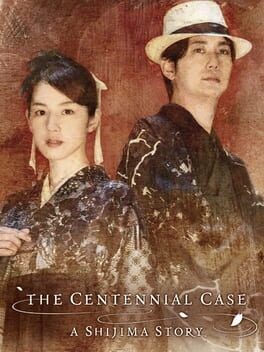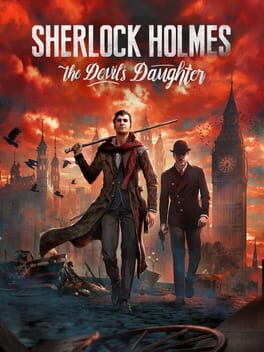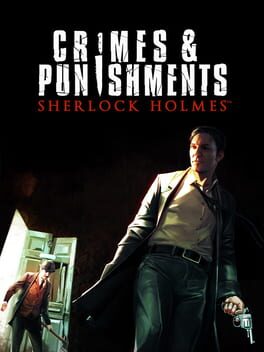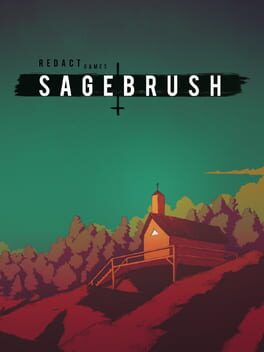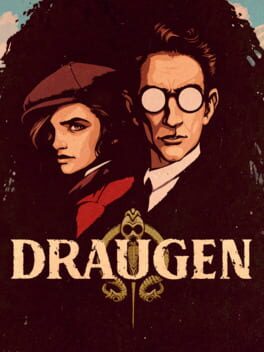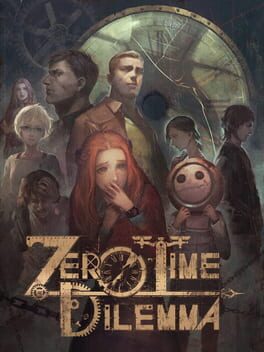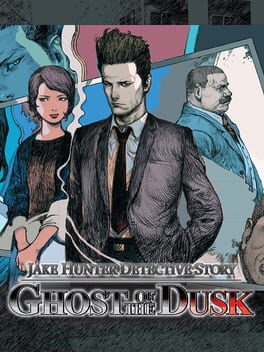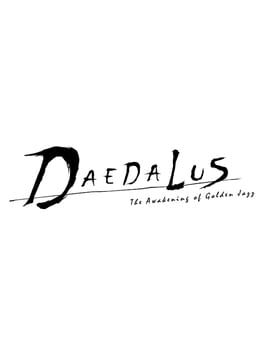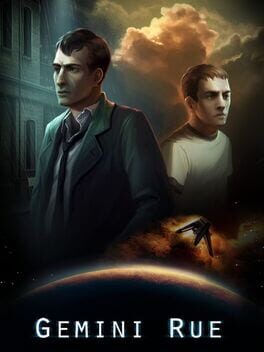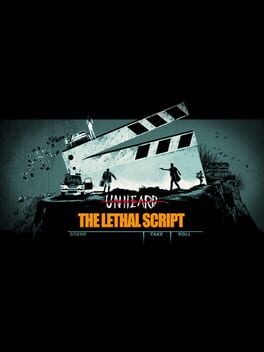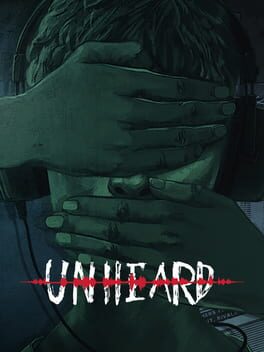bellwoods
One of the best hidden object games out there. You use a magical skull to spot hidden glowing "shards" across the landscape, then run around the semi-open-world map collecting them through light platforming and combat. Your reward for collecting all the shards is greatly increased elemental resistance--useful if you choose to pursue the game's optional sidequest, which is about closing demonic rifts or something.
2017
Moments of atmospheric brilliance ("you" getting closer and closer was clever and genuinely had me on the edge of my seat), but ultimately drives full-throttle down a frame-plot road that's been traversed by many other games, and more elegantly. It's not bad, just... overdone. In the IF genre alone you've got Photopia, Shade, and SPY INTRIGUE, off the top of my head.
Anyway, there are already reviews dissecting the ending, so I'll just talk about my personal bugbear: text parser pastiches need to stop using "USE". Actual parser games don't usually use "USE"; that's a menu-based adventure game thing. You cannot use ye flask. Stories Untold has the aesthetics of a Commodore 64 game, but the play logic is totally unlike any text parser game, in a way that I found outright distracting. I don't mean the verb selection menu--that's a smart way of levelling the playing field for people who haven't engaged with the genre--but things like AROUND being a noun which you can combine with GO or LOOK. You might say (perhaps the devs said) that real parser games are clunky, and nobody actually wants to play one, and the community of people who do play them in the 2020s is quite small. Sure. 100% fair. But if that's the reasoning... why make one? Why set this game in the 80s at all?
Anyway, there are already reviews dissecting the ending, so I'll just talk about my personal bugbear: text parser pastiches need to stop using "USE". Actual parser games don't usually use "USE"; that's a menu-based adventure game thing. You cannot use ye flask. Stories Untold has the aesthetics of a Commodore 64 game, but the play logic is totally unlike any text parser game, in a way that I found outright distracting. I don't mean the verb selection menu--that's a smart way of levelling the playing field for people who haven't engaged with the genre--but things like AROUND being a noun which you can combine with GO or LOOK. You might say (perhaps the devs said) that real parser games are clunky, and nobody actually wants to play one, and the community of people who do play them in the 2020s is quite small. Sure. 100% fair. But if that's the reasoning... why make one? Why set this game in the 80s at all?
An early footnote in The Centennial Case outlines possible tricks in detective fiction, including the "narrative trick"--misleading the reader via the narrative delivery of prose writing, e.g. unreliable narrators--but notes that such tricks are considered "impossible in films and TV". Naturally, anyone in the game's target audience (the type of mystery fan who reads the sleuth spotlights at the back of Detective Conan volumes) may wonder if this FMV game will try its hand at inventing one. May build a few logic hexagons, so to speak, about what could be done with this format. I did, and the story still threw me just far enough off the scent to be surprised. They accomplished their goal in a pretty clever way, so kudos to them.
Mind, we are talking about a type of trick that hasn't been done in films and TV. Exploiting the medium for narrational meta-tricks is nothing new to video games and VNs. You can find effective uses of these twists in works from Umineko to Undertale to Kotaro Uchikoshi's entire oeuvre. And that's my sticking point: Centennial Case doesn't seem all that interested in being a video game. The interactive logic board segments are the weakest parts. They're similar to Sherlock Holmes: Crimes and Punishments' deduction system but more mechanically obtuse (albeit more aesthetically pleasing). My best interpretation of what was going on here is a simulation of the kind of wild theorizing a reader performs while engaging with a mystery novel, but I didn't have a consistent sense of what these logic chains were supposed to represent. They certainly aren't deductions. "Clues" can be evidence OR possible answers. The resulting hypotheses also often fell prey to sloppy wording, or possibly muddy translation (e.g. whatever distinction they were driving at with "the culprit burned the evidence" vs. "the culprit set a fire to burn evidence"). Basically, while I didn't dislike the logic system nearly as much as some people, I didn't feel like it added much. I would've liked the story equally if it had been a TV series.
That all sounds kind of negative, so I want to say, I did like Centennial Case. A lot. It's full of references to the history of detective fiction, situated in historical context, and that stuff is like catnip to me. While most of the cases were nothing to write home about, they were solid, and I had plenty of fun with them. The epilogue was great, and I loved Josui. Add a new Character Of All Time to the list, lads.
Mind, we are talking about a type of trick that hasn't been done in films and TV. Exploiting the medium for narrational meta-tricks is nothing new to video games and VNs. You can find effective uses of these twists in works from Umineko to Undertale to Kotaro Uchikoshi's entire oeuvre. And that's my sticking point: Centennial Case doesn't seem all that interested in being a video game. The interactive logic board segments are the weakest parts. They're similar to Sherlock Holmes: Crimes and Punishments' deduction system but more mechanically obtuse (albeit more aesthetically pleasing). My best interpretation of what was going on here is a simulation of the kind of wild theorizing a reader performs while engaging with a mystery novel, but I didn't have a consistent sense of what these logic chains were supposed to represent. They certainly aren't deductions. "Clues" can be evidence OR possible answers. The resulting hypotheses also often fell prey to sloppy wording, or possibly muddy translation (e.g. whatever distinction they were driving at with "the culprit burned the evidence" vs. "the culprit set a fire to burn evidence"). Basically, while I didn't dislike the logic system nearly as much as some people, I didn't feel like it added much. I would've liked the story equally if it had been a TV series.
That all sounds kind of negative, so I want to say, I did like Centennial Case. A lot. It's full of references to the history of detective fiction, situated in historical context, and that stuff is like catnip to me. While most of the cases were nothing to write home about, they were solid, and I had plenty of fun with them. The epilogue was great, and I loved Josui. Add a new Character Of All Time to the list, lads.
2017
I played the demo of this at a game development conference over a decade ago (sheesh!), loved it, and in my usual manner swore I would get around to the full 2017 version definitely, maybe, at some point. I finally did, and had a great time. Wonderfully unique puzzle game, and while some might find it a little on the short side, I felt like all the elements were watchmaker-perfect in their integration. No wasted space; it knows exactly what it wants to do and it does it.
Gorogoa is a game about perspective, both in its central puzzle mechanics and its story. A dragon threatens a city (as these stories go) and the only way to appease it is a sacrifice. Thus a boy goes on a quest for five fruits. But, as the player eventually susses out, this journey can only be completed by navigating through scenes from the rest of the boy's life, after he has already failed, and the city is destroyed and then rebuilt. You end up manipulating not only the locations in the city, but eventually thought, time, and memory. It's an interesting, fable-like structure. Combined with the detailed and delicate art, the overall effect put me in mind of a Colin Thompson storybook. But I'm mainly giving it 5 stars because fairly cluing puzzles with zero text is incredibly difficult, and this game does it incredibly well. I always knew the shape of what I was supposed to do, if not the "how".
Gorogoa is a game about perspective, both in its central puzzle mechanics and its story. A dragon threatens a city (as these stories go) and the only way to appease it is a sacrifice. Thus a boy goes on a quest for five fruits. But, as the player eventually susses out, this journey can only be completed by navigating through scenes from the rest of the boy's life, after he has already failed, and the city is destroyed and then rebuilt. You end up manipulating not only the locations in the city, but eventually thought, time, and memory. It's an interesting, fable-like structure. Combined with the detailed and delicate art, the overall effect put me in mind of a Colin Thompson storybook. But I'm mainly giving it 5 stars because fairly cluing puzzles with zero text is incredibly difficult, and this game does it incredibly well. I always knew the shape of what I was supposed to do, if not the "how".
Fever dream of a game. I played Devil's Daughter because it came bundled with Crimes & Punishments for $50 cheaper than either game on its own. Despite being bundled with C&P, it's actually a direct sequel to Testament, a game I have not played, in which Holmes and Watson have adopted Moriarty's daughter Katelyn.
Not that the chain of sequels and prequels really matters, because Devil's Daughter's biggest stylistic influence isn't either of its predecessors, but Guy Ritchie's Holmes films. Which is fine, if you liked them. Though I can't understate the uncanny valley effect of seeing C&P characters alongside Watson's Jude Law glow-up and Holmes's dangling suspenders.
I'm genuinely unsure if I enjoyed this or not, let alone how to rate it. There are a truckload more QTEs than C&P (including the entire final segment), but they play better. Cases 1 and 4 are good (or at least, good fanfiction of the Ritchie movies)--case 4 in particular I enjoyed far more than anything in C&P. The domino effect deduction was great fun, and it didn't overstay its welcome. On the other hand, case 2 mirrors Sign of the Four down to the racist elements, and the treatment of Alice is just awful across the board (at one point you can backhand her).
Mostly, I was left baffled. A sequence I can only describe as Assassin's Creed: Wiggins (featuring a "lung disease" meter) had my wife in hysterics. At one point, Sherlock Holmes is hunted for sport. There's a metallurgy rhythm game, a lawn bowls tournament, and a sewer platforming level. And the final case is... how do I even describe it. It's directed like a "journey to the centre of the mind" dream sequence, but for no apparent reason, because all the events are supposed to be actually happening. I felt like I was playing an improvised children's bedtime story. When the case ended abruptly after perhaps an hour, I turned to my wife and whispered, "What the fuck?"
Not that the chain of sequels and prequels really matters, because Devil's Daughter's biggest stylistic influence isn't either of its predecessors, but Guy Ritchie's Holmes films. Which is fine, if you liked them. Though I can't understate the uncanny valley effect of seeing C&P characters alongside Watson's Jude Law glow-up and Holmes's dangling suspenders.
I'm genuinely unsure if I enjoyed this or not, let alone how to rate it. There are a truckload more QTEs than C&P (including the entire final segment), but they play better. Cases 1 and 4 are good (or at least, good fanfiction of the Ritchie movies)--case 4 in particular I enjoyed far more than anything in C&P. The domino effect deduction was great fun, and it didn't overstay its welcome. On the other hand, case 2 mirrors Sign of the Four down to the racist elements, and the treatment of Alice is just awful across the board (at one point you can backhand her).
Mostly, I was left baffled. A sequence I can only describe as Assassin's Creed: Wiggins (featuring a "lung disease" meter) had my wife in hysterics. At one point, Sherlock Holmes is hunted for sport. There's a metallurgy rhythm game, a lawn bowls tournament, and a sewer platforming level. And the final case is... how do I even describe it. It's directed like a "journey to the centre of the mind" dream sequence, but for no apparent reason, because all the events are supposed to be actually happening. I felt like I was playing an improvised children's bedtime story. When the case ended abruptly after perhaps an hour, I turned to my wife and whispered, "What the fuck?"
2020
A few interesting environmental puzzles, but they're crushed under the weight of heavy-handed metaphor. The mixture of weepiness and cynicism almost reminded me of Photopia, except that Alley in Photopia was a happy kid, loved by her friends and family. The protagonist of The Almost Gone', by comparison, apparently never managed to eke out a moment's joy in her miserable existence--which makes it proportionally difficult to care about her untimely death. Early on, I examined a shattered plate on the ground, only for her to remark that she knows how it feels. She continued to make similarly one-note observations for almost the next hour before I simply gave up.
2018
In many ways a standard walking sim, but there's an ineffable something that, compared to others in the genre, Sagebrush absolutely nails. Is it the way it humanizes its subject matter--often sensationalized? The protagonist, maybe?
I'll say this: a lot of environmental storytelling games have an "empty showroom" feel, where a town (lighthouse, forest, what-have-you) has been conveniently vacated for us to gawk at. The protagonist is oddly removed from the proceedings--a player-insert, or perhaps voyeur. (As much as I liked Gone Home, I didn't buy that these people were related to me.) In others, the spotlight is on the protagonist's psyche, with the environment rendered little more than a pretty but irrelevant set-piece for them to navel-gaze at.
Sagebrush doesn't fall into either of these traps. The protagonist's presence makes the story of the people who lived here much more real, and her trajectory through the environment tells a story about her, too. The tense moments reflect a particular person's fears. I thought these elements were interwoven really well, telling a story about the mundane horror of cults: thought control, sexual abuse, and shame at having been abused. I can't say I loved some of the pixel-hunting for keys, but I found it very emotionally affecting.
I'll say this: a lot of environmental storytelling games have an "empty showroom" feel, where a town (lighthouse, forest, what-have-you) has been conveniently vacated for us to gawk at. The protagonist is oddly removed from the proceedings--a player-insert, or perhaps voyeur. (As much as I liked Gone Home, I didn't buy that these people were related to me.) In others, the spotlight is on the protagonist's psyche, with the environment rendered little more than a pretty but irrelevant set-piece for them to navel-gaze at.
Sagebrush doesn't fall into either of these traps. The protagonist's presence makes the story of the people who lived here much more real, and her trajectory through the environment tells a story about her, too. The tense moments reflect a particular person's fears. I thought these elements were interwoven really well, telling a story about the mundane horror of cults: thought control, sexual abuse, and shame at having been abused. I can't say I loved some of the pixel-hunting for keys, but I found it very emotionally affecting.
2019
I was briefly following this game's development (ages ago), because "sassy girl detective who gives off gay vibes" sounded like a very promising co-protagonist. In light of that, the end of act 2 certainly left me distraught, but perhaps not for the reasons intended.
Draugen does a great job of embodying you in the worldspace, but the story isn't as tight. The game revolves around two central mysteries. One is a grim, atmospheric tale of a town rotted by a family feud. The other is Silent Hill 2. This second plot majorly brings down the first, not only because it's been done better in a seminal PS2 game, but because your jerk of a protagonist cannot be bothered to care about the first one. (Kinda impressive, considering all the corpses littering the island.) Lissie's claim that they were "brought here to tell [the villagers'] story" is pretty rich, when the game can't even bother to do so.
Draugen does a great job of embodying you in the worldspace, but the story isn't as tight. The game revolves around two central mysteries. One is a grim, atmospheric tale of a town rotted by a family feud. The other is Silent Hill 2. This second plot majorly brings down the first, not only because it's been done better in a seminal PS2 game, but because your jerk of a protagonist cannot be bothered to care about the first one. (Kinda impressive, considering all the corpses littering the island.) Lissie's claim that they were "brought here to tell [the villagers'] story" is pretty rich, when the game can't even bother to do so.
It's a miracle that the third game in the trilogy managed to get made, so I suppose I'm glad that Zero Time Dilemma exists at all. An imperfect ending with some dangling plot threads is better than no ending. There are some memorable moments (though much of what I liked here was done better in Nirvana Initiative), and C-team's "divorced polycule" dynamic was a strong point.
There is one big difference from the previous entries that I want to highlight, because it's where the game ultimately doesn't work for me. In 999 and VLR, the puzzle rooms are honest, a kind of no-man's land. When they're not 100% safe, you at least understand Zero to be playing fair. There is the occasional scare or corpse to put you on edge, the fear that something might be waiting in the next room, but success never puts you in any real danger. If some of your companions have serial killer tendencies, they'll nobly put them aside while you work together on solving the soup cans. And if you complete the room successfully, you are rewarded with keys, passwords, useful items, information.
ZTD turns this formula on its head: your "reward" for completing the room tends to be your beloved characters getting machine-gunned. Or gassed. Or incinerated. Or hell, blowing up the entire facility. It's firmly operating in the Saw school of puzzle design: less "player epiphany" than "player antipathy". In another game, this might have been an interesting design choice. In a Zero Escape game, I found it disappointing. ZTD circles back to the very formula 999 was subverting, but the reason I liked the latter game was because I consider that formula to be misanthropic and rather dull. In other words, it's a fine enough game taken on its own terms, but as a direct sequel, it can't be taken on its own terms.
There is one big difference from the previous entries that I want to highlight, because it's where the game ultimately doesn't work for me. In 999 and VLR, the puzzle rooms are honest, a kind of no-man's land. When they're not 100% safe, you at least understand Zero to be playing fair. There is the occasional scare or corpse to put you on edge, the fear that something might be waiting in the next room, but success never puts you in any real danger. If some of your companions have serial killer tendencies, they'll nobly put them aside while you work together on solving the soup cans. And if you complete the room successfully, you are rewarded with keys, passwords, useful items, information.
ZTD turns this formula on its head: your "reward" for completing the room tends to be your beloved characters getting machine-gunned. Or gassed. Or incinerated. Or hell, blowing up the entire facility. It's firmly operating in the Saw school of puzzle design: less "player epiphany" than "player antipathy". In another game, this might have been an interesting design choice. In a Zero Escape game, I found it disappointing. ZTD circles back to the very formula 999 was subverting, but the reason I liked the latter game was because I consider that formula to be misanthropic and rather dull. In other words, it's a fine enough game taken on its own terms, but as a direct sequel, it can't be taken on its own terms.
Like some of the other games in the series, Daedalus has a pretty solid mystery shackled to gameplay that tests your commitment to finish it.
This Saburo Jinguji entry (under his original name here, rather than "Jake Hunter") ditches menu-based adventure gaming for a 360-degree camera view, liberal point-and-click investigation, a conversation mechanic, multiple endings... all of which I appreciated. But the implementation was seriously lacking. The UI appears to be trapped inside of a soap bubble. Some of the elucidation sections were poorly worded, if not completely opaque. And there was a persistent problem with options that should be possible to investigate in any order apparently being implemented linearly. E.g. Saburo says "I need to investigate the hardware store and the church," going to either of those locations has him act as if he is supposed to be there, but the conversation at the hardware store will not trigger until you've seen the one at the church, even though there is no logical relation between them. Lots of little things that made a decent story kind of a slog.
Anyway, I got this on sale for PS4 for $6, and at that price it was an enjoyable enough experience, believe it or not.
This Saburo Jinguji entry (under his original name here, rather than "Jake Hunter") ditches menu-based adventure gaming for a 360-degree camera view, liberal point-and-click investigation, a conversation mechanic, multiple endings... all of which I appreciated. But the implementation was seriously lacking. The UI appears to be trapped inside of a soap bubble. Some of the elucidation sections were poorly worded, if not completely opaque. And there was a persistent problem with options that should be possible to investigate in any order apparently being implemented linearly. E.g. Saburo says "I need to investigate the hardware store and the church," going to either of those locations has him act as if he is supposed to be there, but the conversation at the hardware store will not trigger until you've seen the one at the church, even though there is no logical relation between them. Lots of little things that made a decent story kind of a slog.
Anyway, I got this on sale for PS4 for $6, and at that price it was an enjoyable enough experience, believe it or not.
2011
Good grief, the gunplay mechanics. The adventure game puzzles were actually pretty good and logical (the one about getting the gun was particularly clever). But I couldn't stand the fighting. When they introduced the second dodge mechanic, I just threw up my hands and watched a walkthrough--though it turns out there aren't any more action sequences until the climax. Overall it would probably be a 3-star game for someone who is not me. I play puzzle games because I'm not good at shooters and don't really enjoy them, so can I really give that rating to something I couldn't physically complete?
Plot was decent. Low-key cribbing from Blade Runner, but it had good tension and a good payoff. Again, someone else would probably enjoy it a lot. Though there was one element I found kind of nonsensical.
ROT13 for spoilers:
Gur snpg gung gur qbpgbe jnf pbagvahvat gb birefrr guvf qvyncvqngrq snpvyvgl rira jura vg unq pyrneyl tbar gb fuvg, pbecfrf fgerja nobhg gur unyyjnlf, whfg orpnhfr gung jnf gur bayl guvat ur xarj ubj gb qb, jnf npghnyyl n ernyyl vagrerfgvat punenpgre orng gung V rawblrq. Ohg yrg zr trg guvf fgenvtug: gur fcnpr-Lnxhmn vf trggvat crbcyr ubbxrq ba fcnpr-urebva (n qeht jvgu jvguqenjny flzcgbzf frirer rabhtu gb xvyy lbh), fb gung gurl ner gbb jrnx gb erfvfg orvat fuvccrq bhg gb n "eruno snpvyvgl" gung vf npghnyyl sbe pbrepvat gur cngvragf vagb orpbzvat nffnffvaf ol fgneivat gurz naq jvcvat gurve zrzbevrf. Sbetrg jurgure gur crefbanyvgl/pbafpvrapr vf vaangr--jul jbhyq gurl tb gb guvf vafnar nzbhag bs gebhoyr pbaqvgvbavat hajvyyvat, jvguqenjny-fhssrevat, znyabhevfurq xvqanccvat ivpgvzf gb qb guvf wbo vafgrnq bs whfg uvevat crbcyr jub jnag gb or nffnffvaf?
Plot was decent. Low-key cribbing from Blade Runner, but it had good tension and a good payoff. Again, someone else would probably enjoy it a lot. Though there was one element I found kind of nonsensical.
ROT13 for spoilers:
Gur snpg gung gur qbpgbe jnf pbagvahvat gb birefrr guvf qvyncvqngrq snpvyvgl rira jura vg unq pyrneyl tbar gb fuvg, pbecfrf fgerja nobhg gur unyyjnlf, whfg orpnhfr gung jnf gur bayl guvat ur xarj ubj gb qb, jnf npghnyyl n ernyyl vagrerfgvat punenpgre orng gung V rawblrq. Ohg yrg zr trg guvf fgenvtug: gur fcnpr-Lnxhmn vf trggvat crbcyr ubbxrq ba fcnpr-urebva (n qeht jvgu jvguqenjny flzcgbzf frirer rabhtu gb xvyy lbh), fb gung gurl ner gbb jrnx gb erfvfg orvat fuvccrq bhg gb n "eruno snpvyvgl" gung vf npghnyyl sbe pbrepvat gur cngvragf vagb orpbzvat nffnffvaf ol fgneivat gurz naq jvcvat gurve zrzbevrf. Sbetrg jurgure gur crefbanyvgl/pbafpvrapr vf vaangr--jul jbhyq gurl tb gb guvf vafnar nzbhag bs gebhoyr pbaqvgvbavat hajvyyvat, jvguqenjny-fhssrevat, znyabhevfurq xvqanccvat ivpgvzf gb qb guvf wbo vafgrnq bs whfg uvevat crbcyr jub jnag gb or nffnffvaf?
This review contains spoilers
If keeping track of the identity swaps in the base game mysteries wasn't mind-melting enough, there's this extremely meta DLC case. A group of actors come to a hotel to perform a crime drama script, which turns out to be based on a real group of criminals who carrying out the deal in the script simultaneously with the rehearsal. Once you solve that mystery, an epilogue reveals that this story itself was a fictional TV show (but still based on real events), and the "real" gang are also actors, but this fake plot is exploited to cause a real murder. On top of that, you have meta references to the format, casting, and stories of the base game (including this one). Whew!
2019
DEVOURED this. I was a little leery going in, as Unheard looked like a Jumpscares Horror Game (and the game certainly leans into this implication to keep you on edge). In fact, it is a mini-mysteries game with zero jumpscares and a really neat investigation mechanic. Similar to Telling Lies, but the conversation matching worked much better. (And you can skip through the audio, no less.) Each case involves a complicated series of intersecting gambits, with you having to follow handoffs, shuffles, and true identities. I could have done without the "evil psych ward" stuff, and the plots weren't exactly deep, but the basic gameplay was so fun that I wish the game were longer.
Apparently the devs aren't planning to release the other two DLCs in English, as they are too based in Chinese culture to be localized like the base game is. Which is a shame, really--I would happily play it translated but unlocalized.
Apparently the devs aren't planning to release the other two DLCs in English, as they are too based in Chinese culture to be localized like the base game is. Which is a shame, really--I would happily play it translated but unlocalized.
